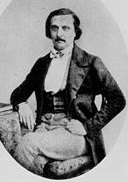

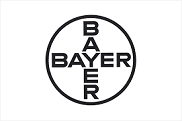


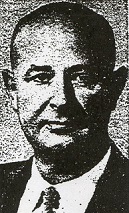










TLW's Drugscope™ (Drug Historyscope) |
By T.L. Winslow (TLW), the Historyscoper™ |
© Copyright by T.L. Winslow. All Rights Reserved. |
Original Pub. Date: Sept. 6, 2016. Last Update: Oct. 28, 2021. |
Westerners are not only known as history ignoramuses, but double dumbass history ignoramuses when it comes to Drug history. Since I'm the one-and-only Historyscoper (tm), let me quickly bring you up to speed before you dive into my Master Historyscope.
In the 2nd cent. B.C.E. Illyrian king Gentius allegedly discovers the medicinal (anti-dyspeptic) properties of the gentian (genius Gentiana) plants, found only in high mountain meadows and pastures, with blue or yellow flowers - Ricola?


In 1837 French chemist Charles Frederic (Frédéric) Gerhardt (1816-56) discovers Acetylsalicylic Acid, the active ingredient in willow bark, but sets it aside as impractical after his formulation proves unstable; in 1878 Felix Hoffman rediscovers it. In 1890 the non-addictive topical anesthetic Benzocaine is isolated in Germany, and given the trade name Anesthesin. In 1898 Bayer Pharmaceutical Products (founded Aug. 1, 1863) of Darmstadt, Germany begins marketing a new, rather habit-forming cough suppressant formula (good also for laryngitis and TB), with its trademarked drug heroin (diacetylmorphine) as it main ingredient ("Heroin, the medicine for coughs"); the name is derived from the German word heroisch (large, powerful); German chemist Heinrich Dreser (1860-1924) is dir. of research. In 1899 Bayer Co. of Germany patents and trademarks Aspirin, from the "a" in acetyl, and the "spir" in Spiraea ulmaria, the willowleaf meadowsweet, later calling it the "Wonder Drug"; it is sold in powder form, the first tablets being sold in 1915; as part of the 1919 Versailles Treaty Bayer gives up its patents on aspirin and heroin - WWI was one giant headache?
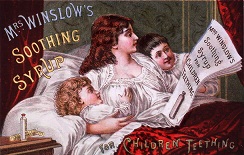
In 1845 Mrs. Winslow's Soothing Syrup begins production by Benjamin Perkins, a suspension of morphine in alcohol devised by Albion, Maine nurse midwife Mrs. Charlotte Winslow, mother of Lucy Winslow, wife of Perkins' partner Curtis; it goes on to be marketed worldwide, killing babies with morphine ODs, selling 1.5M bottles/year by 1868 at $25/bottle; in 1880 it becomes the Anglo-Am. Drug Co.; the 1906 U.S. Pure Food and Drug Act requires medicine labels to disclose their ingredients, hurting sales until the 1914 U.S. Harrison Act regulates opiates, causing morphine to be dropped from the formula and the word "Soothing" to be taken from its labels; it is not discontinued until the 1830s.
In 1848 Friedrich Wohler discovers hydroquinone, a relative of carbolic acid (phenol).

In 1849 Mrs. Winslow's Soothing Syrup is introduced by Mrs. Charlotte N. Winslow of Bangor, Maine; the active ingredient is morphine; in 1879 English composer Edward Elgar composes a wind quintet in its honor; it is not withdrawn until 1930; in 1940 Woody Guthrie's "Tom Joad" mentions Grandpa Joad being given it before he dies.


In 1859 German physician Albert Niemann (1834-61) of the U. of Gottingen improves the coca purification process and names the alkaloid cocaine, the active agent in the leaves of the coca plant, first isolated in 1855; its molecular formula C17H21NO4 is pub. in 1863 by colleague Wilhelm C. Lossen (1838-1906).
In 1881 Valproate is discovered, later being discovered to be useful in preventing migraine headaches and seizures and treating epilepsy and bipolar disorder; it is first used medically in 1962, and is marketed under the brand name Depakote.
In 1884 the analgesic Aminopyrine is discovered and used a synthetic substitute for quinine.

In 1897 German pharmacologist-chemist Arthur Carl Wilhelm Heffter (1859-1925) isolates Mescaline, the hallucinatory agent in peyote cactus, and becomes the first "psychonaut", willing to test the stuff on himself.
In 1902 Barbital (Barbitone) is synthesized by German chemists Emil Fischer and Joseph von Mering, becoming the first commercially available barbituate, used as a sleeping aid (hypnotic) until the 1950s; in 1904 Bayer markets it as Veronal, while Schering markets it as Medinal for "insomnia induced by nervous excitability", replacing bromides as a sleeping aid; too bad, tolerance is easily developed, encouraging lethal ODs.


In 1912 German Merck chemist Anton Kollisch (Köllisch) (1888-1916) synthesizes MDMA (Ecstasy) (AKA Mandy, Molly) to stop abnormal bleeding; it is patented on May 16, 1914; its potential as a recreational drug is first publicized in 1978 by Am. chemist Alexander Theodore "Sasha" Shulgin (1925-2014) of UCB, who compares it "to marijuana, and to psilocybin devoid of the hallucinatory component", causing the drug's popularity to take off, and Shulgin to become known as "the Godfather of Psychedelics"; Shulgin calls it "my low-calorie martini".
In 1917 the semisynthetic opioid Oxycodone, extracted from the opium poppy is developed in Germany; it is 1.5x as potent than morphine.
In 1922 Emil Werner and James Bell first describe the biguanide Metformin (Glucophage), found in French lilac (goat's rue); in 1929 its sugar-lowering action is discovered in rabbits; in 1958 it is introduced in Britain by Aaron subsidiary Rona; it is approved in Canada in 1972, and the U.S. FDA in 1994, with Bristol-Myers Squibb introducing it in the U.S. on Mar. 3, 1995, going on to become the world's most widely prescribed antidiabetic medication.

In 1927 the first commercial amphetamines are synthesized by pharmacologist Gordon Albert Alles (1901-63) in Los Angeles, Calif., who notes the "stimulating effect on the central nervous system"; the Benzedrine (amphetamine sulfate) inhaler is introduced in 1932.


In 1942 Am. physician George Herbert Hitchings (1905-98), and Am. biochemist Gertrude Belle Elion (1918-98) of Wellcome Research Labs begin working on chemotherapy drugs, going on to develop pyrimethamine for malaria, thioguanine and 6-mercaptopurine for leukemia, allopurinol for gout, azathioprine for organ transplanation, and co-trimoxazole for bacterial infections, leading the way to research for antiviral drugs for herpes (acyclovir) and AIDS (zidovudine), winning them the 1988 Nobel Med. Prize.
In 1944 Methylphenidate is first synthesized by Leandro Panizzon of Ciba, who names it Ritalin after his wife Rita; it is identified as a central nervous stimulant in 1954; medical use begins in 1960.

In 1948 the antiobiotics Aureomycin and Chloromycetin are discovered by U.S. scientist Benjamin Minge Duggar (1872-1956) et al. of Lederle Labs.
In 1948 Dramamine is found to relieve air and sea sickness.
On Apr. 4, 1951 a Navy inductee rushes into the Naval Hospital in Philly after giving himself an OD of rat poison based on the new anticoagulant drug Warfarin (developed by the Wisc. Alumni Research Foundation from sweet clover mold) to avoid induction, and is saved by administration of Vitamin K, after which doctors begin researching the use of Warfarin to prevent blood clots and restore blood flow in stroke victims. On Sept. 11, 1955 Pres. and Mrs. Eisenhower dedicate the new pulpit of the Corona Presbyterian Church at E. 8th Ave. and Downing St. in Denver, Colo.; on Sept. 24 Pres. Eisenhower suffers a massive heart attack two hours after midnight in his mother-in-law's home at 750 Lafayette St. in Denver after visiting banker Aksel Nielsen at the Byers Peak Ranch outside Denver, followed by Lowry AFB, then Cherry Hills Golf Course, where he had hamburgers with raw onions for lunch, which he claimed gave him chest pains; he is taken to Fitzsimons Hospital outside Denver, whre he is treated with the newly-approved drug Warfarin; on Sept. 26 (Mon.) the New York Stock Exchange suffers its worst decline since 1929 ($12B) (down to 444.56) when word is released concerning his condition, but news from his physician Dr. Paul Dudley White that he can return to work in two weeks causes the market to rebound on Sept. 27.
In May 1950 the tranquilizer Miltown (Meprobamate), AKA Don't-Give-a-Damn Pills is synthesized by Wallace Labs; in 1955 it hits the market bigtime in Madison Ave. and Hollywood, going on to become the #1 selling drug in the U.S.; Milton Berle quips "I'm thinking of changing my name to Miltown Berle."

In 1950 Arthur Nobile (1920-2004) of the U.S. uses bacteria to turn cortisone and hydrocortisone into the superior anti-inflammatory drugs Prednisone and Prednisolone, creating a new industry.
In 1951 the sedative-hypnotic drug Methaqualone is first synthesized in India by Indra Kishore Kacker and Syed Husain Zaheer for use as an antimalarial drug; by 1965 it becomes the most commonly prescribed sedative in Britain, sold under the names Mandrax, Malsed, Malsedin, and Renoval; in 1975 it becomes the 6th best-selling sedative in the U.S., marketed under the brand name Quaalude ("quiet interlude") by William H. Rorer Inc.; too bad in the 1960s and 1970s it becomes a popular date rape drug, called ludes and sopers (soaps) in the U.S., and mandrakes in the British Commonwealth.
The 1960s is the Pharamaceutical Decade as blood pressure, tranquilizer, and other drugs hit the market bigtime, starting with the anti-anxiety sedative-hypnotic Benzodiazepines (BZDs) incl. Librium (Chlordiazepoxide) (AKA Librax, Libritabs, Mesural, Multum, Novapam, Sonimen, Tropium, Angirex, Elenium, Klopoxid et al.) of Hoffmann-La Roche Labs, which was discovered accidentally in 1955 by Leo Sternbach and receives FDA approval on Feb. 24; in 1963 it markets the benzodiazepine drug Diazepam AKA Valium; in 1977 the benzodiazepine drug Lorazepam is introduced, becoming known for its ability to induce sleep and amnesia, making it the date rape drug of choice - my mother used to look like this?
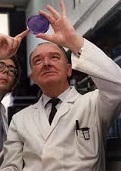
In 1960 the opioid drug Fentanyl (Fentanil) is discovered by Belgian physician Paul Janssen (Paul Adriaan Jan, Baron Janssen) (1926-2003) (founder of Janssen Pharmaceutica in 1953) , and approved by the U.S. FDA in 1968, going on to cause 20K deaths/year in the U.S. incl. celebs like rock star Prince.
In 1961 Beecham Co. of Britain begins marketing the antiobiotic Ampicillin (Penbritin).
In 1962 the loop diuretic Furosemide (AKA Lasix) is discovered, becoming the drug of choice for fluid buildup due to heart failure et al.

In 1963 Croatian-born Jewish-Am. chemist Leo Henryk "Xanman" Sternbach (1908-2005) of Roche Labs in N.J. develops the anti-anxiety drug Valium (Diazepam), the first "blockbuster drug", which in 1969-82 becomes the most prescribed drug in the U.S. (2.3B in 1978); although he makes zillions for Roche, he never becomes wealthy.

In 1964 Romanian psychologist-chemist Corneliu E. Giurgea (1923-95) synthesizes the learning-memory enhancing drug Piracetam; in 1972 he coins the term Nootropic for intelligence enhancing or smart drugs.
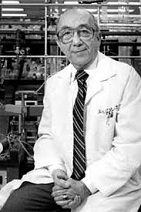
In 1964 Am. scientist Curly, er, Jerome Phillip Horowitz (1919-2012) synthesizes the anti-viral drug Zidovudine (ZDV) (AZT) (Retrovir), later used to treat HIV - Curly did it?
In 1967 Clomiphene (Clomifene) is introduced to increase female fertility, also resulting in an increase in multiple births; Ahnuld, er, steroid-taking athletes soon begin using it at the end of their steroid cycle to reduce the effects of estrogen in causing breast growth (gynecomastia) and to restore the natural production of testosterone.

In 1967 Monroe E. Wall (1916-2002) and Mansukh C. Wani (1935-) of the Research Triangle Inst. in N.C. isolate the anticancer chemical Taxol (Paclitaxel) from the bark of the Pacific yew tree Taxus brevifolia, which is later marketed by Bristol-Myers Squibb for breast and ovarian cancer patients.
In 1969 Loperamide is first synthesized, becoming the drug of choice to control diarrhea in 1976, marketed under the name Imodium.



On Apr. 22, 1970 (Lenin's birthday) the U.S. environmental movement is born with the first Earth Day, founded by U.S. Sen. (D-Wisc.) (1963-81) and former Wisc. gov. #35 (1959-63) Gaylord Anton Nelson (1916-2005), organized by the Earth Week Committee of Philadelphia, Penn., and celebrated in the U.S. by 22M people with demonstrations against pollution of Spaceship Earth (coined by Adlai E. Stevenson) amid herds of massive leaded-gas-slurping V8 sedans, a nation filled with smoky industrial smokestacks, and a coverup of a fuel rod meltdown at the Savannah River Nuclear Plant near Aiken, S.C. (acknowleged in 1988); the idea was first proposed in 1969 by Davis City, Iowa-born John McConnell (1915-2012) (designer of the Earth Flag) to the San Francisco Board of Supervisors, then coordinated by environmental activist Denis Allen Hayes (1944-), and supported by U Thant, Margaret Mead et al.; meanwhile on Jan. 14-23 Nelson goes for a double and holds the Nelson Hearings on the safety of combined oral contraceptive pills, resulting in the first side-effect disclosure for a pharmaceutical drug in the U.S.

In Dec. 1971 Swiss pharmacologist Hartmann F. Stahelin (Stähelin) (1925-2011) of Sandoz Corp. in Basel, Switzerland discovers the immunosuppresant Cyclosporin (Ciclosporin) A in the fungus Tolypociadum inflatum; on Jan. 31, 1972 Belgian scientist Jean-Francois Borel (1933-) discovers its immunosuppresant activity; in 1978 Anthony C. "Tony" Allison (1925-2014) and Sir Roy Yorke Calne (1930-) of Cambridge U. prove its success in preventing organ rejection in kidney transplants; in 1983 it is approved by the FDA.

In 1971 British pharmacologist Sir John Robert Vane (1927-2004) et al. of Wellcome Research Labs. pub. their discovery that aspirin produces its pain-relieving and fever-reducing effects by inhibiting synthesis of Prostagalandins, lipid mediators; too bad, one type of prostaglandin protects the stomach and kidney; Vane goes on to win the 1982 Nobel Med. Prize and get knighted in 1984 - in vain?
In 1976 the beta blocker Atenolol is introduced as a replacement for propranolol in the treatment of hypertension.
In 1976 the anesthetic drug Midazolam (Versed) is introduced, becoming the drug of choice for lethal injection executions.
In 1976 the opioid pain reliever Oxycodone/Paracetmol (AKA Percocet, Endocet, Ratio-Oxycocet) is approved by the U.S. FDA.
In 1977 the antidepressant drug Sertraline AKA Zoloft is developed by Kenneth Koe and Willard Welch of Pfizer; it is approved by the U.K. in 1990, the U.S. FDA in 1991, and Australia in 1994; the U.S. patent expires in 2006.
In 1977 opioid pain drug Tramadol (Ultram) (originally Tramal) is introduced by Grunenthal GmbH of West Germany, reaching the U.S., U.K., and Australia in 1997.
In 1979 Omeprazole proton pump inhibitor is discovered, getting marketed under the names Prilosec, Losec et al., getting on the WHO's list of essential medicines; too bad, on Feb. 15, 2015 Britta Haenisch et al. of the German Center for Neurodegenerative Diseases in Bonn pub. an article in JAMA Neurology announcing that people age 75+ who regularly take proton pump inhibitors (Prilosec, Nexium, Prevacid) have a 44% increased risk of dementia.
In 1980 the antiobiotic Azithromycin (Zmax) (Zithromax) (Sumamed) is discovered by the Yugoslavian pharmaceutical co. Pliva, who patents it in 1981; in 1986 Pfizer obtains exclusive rights for distribution in W Europe and the U.S.
In 1981 Alprazolam (Xanax) is introduced by Upjohn to treat anxiety disorders, becoming a blockbuster drug in the U.S.
In 1981 Beecham Co. of Britain introduces Augmentin, a broad spectrum antibiotic.
In 1981 the anti-ulcer stomach acid inhibitor drug Zantac (Ranitidine) is introduced by Glaxo Pharmaceuticals of Britain, competing with SmithKline's Tagamet approved by the FDA in 1977, claiming fewer side effects and becoming the world's largest-selling prescription drug by 1986; too bad, on Sept. 2019 the FDA finds it to be a probable human carcinogen, ordering its recall.
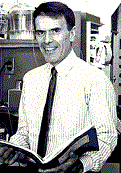
In 1982 after his wife Judith notes that obese people consume carbohydrates to raise brain serotonin levels, Philly-born physician Richard J. "Dick" Wurtman (1936-)of MIT receives a U.S. patent for the use of the French diet drug Dexfenfluramine for raising brain serotonin levels to help control obesity, receiving FDA approval on Nov. 16, 1995; in 1997 the drug is withdrawn from the market after Phen-fen is found to be harmful.
On Nov. 10, 1983 the USDA approves the drug Etoposide for use in treatment of testicular cancer; on Nov. 14 it approves the immunosuppressant Cyclosporine (Ciclosporin) for use in organ transplants.
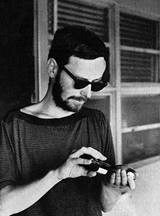
In 1983 German-born Am. psychologist Ralph Metzner (1936-) coins the term "empathogen" for chemical agents such as MDMA (Ecstasy) that produce feelings of empathy.
In 1984 the synthetic drug Sumatriptan (an analog of psychedelic mushroom drug psilocybin) is developed by Glaxo Research for relieving the intensity of migraine and cluster headaches; in 1991 it is approved by the U.S. FDA, going on to be marketed under the trade names Sumatran, Sumax, Aumatriptanum, Imitrex, and Imigran; on Apr. 15, 2008 the FDA approves Treximet, a combo of sumatriptan and naproxen, followed in July 2009 by a single-use jet injector formulation.
In 1987 AZT (Azidothymidine) (Zidovudine) becomes the first drug to gain FDA approval for use in the treatment of AIDS.
On Sept. 18, 1988 Rogaine (originally Regain) (Minoxidil) becomes the first drug approved by the FDA for hair growth.
On Oct. 26, 1988 French pharmaceutical co. Roussel Uclaf announces that it will halt worldwide distribution of "abortion pill" RU-486 because of "an outcry of opinion at home and abroad", but two days later the French govt. orders the co. to reverse (abort?) itself.
In 1989 the antidepressant drug Mirtazapine is approved by the Netherlands, and introduced in the U.S. in 1996 under the brand name Remeron.
In 1993 BASF Bioresearch Corp. and Cambridge Antibody Technology U.K. begin developing monoclonal antibody drugs, coming up with Adalimumab, which is sold under the trade name Humira to treat rheumatoic and psoriatic arthritis, ankylosing spondylitis, Crohn's disease et al., becoming the #1 best-selling pharmaceutical product by the time its U.S. patent expires in 2016, with $16B global sales/year.
In 1993 the U.S. FDA approves the sale of the atypical antipsychotic drug Risperidone (brand name Risperdale), which becomes the drug of choice to treat schizophrenia, bipolar disorder, and irritability in autism sufferers.
On Jan. 11, 1994 the U.S. FDA approves the arthritis drug Naproxen Sodium (Naproxen, Aleve, Anaprox, etc.), the first new nonprescription pain reliever approved since 1984.
In 1995 Otsuka Pharmaceutical develops the anti-psychotic drug Aripiprazole (brand name Abilify), partnering with Bristol-Meyers squibb in 1999 and obtaining U.S. FDA approval for use in treatment of schizophrenia on Nov. 15, 2002, later acute manic and mixed episodes associated with bipolar disorder, and major depressive disorder; in 2013 it has global sales of $7B.
On Mar. 12, 1996 the FDA approves the AIDS protease inhibitor drug Indinavir, invented by Kate Halloway and Chen Zhiao.
In 1996 the phenethylamine class CNS stimulant Adderall, a mixture of four amphetamine salts is introduced by Richwood Pharmaceuticals, becoming popular as an athletic performance and cognitive performance enhancer as well as a treatment for narcolepsy and ADHD.
In 1996 the USDA approves the marketing of the acetylcholinesterase inhibitor Donepezil for Alzheimer's patients, marketed by Esai Co. of Japan under the name Aricept.
In Feb. 1997 the cholesterol-lowering drug Lipitor (atorvastatin calcium) by Warner-Lambert is introduced, soon becoming the #1-selling statin drug.
In Feb. 1997 the U.S. FDA declares the emergency contraception Morning-After Pill to be safe and effective; on Aug. 24, 2006 it okays over-the-counter sale of Plan B for those age 18 or older - the summer's next big splash is here?
In 1997 after being introduced for the treatment of prostate enlargement in 1992, the FDA approves Finasteride (brand names Propecia, Proscar) for preventing male scalp hair loss.
On Mar. 27, 1998 the Viagra (sildenafil citrate) pill for male impotence by Pfizer is approved by the U.S. FDA, and hits the market hard, with 3.6M prescriptions written in its first 4 mo.
On Dec. 31, 1998 the FDA approves Pfizer's Celebrex for arthritis sufferers, becoming the first approved COX-2 inhibitor - since the padded bra?
On Oct. 27, 2000 the U.S. Drug Addiction Treatment Act, sponsored by Sen. Orrin G. Hatch (R-Utah) and Sen. Carl M. Levin (D-Mich.) is signed by Pres. Clinton, treating heroin addiction as a disease, and backing use of methadone alternatives buprenorphine (a partial opiate producing minimum mood alteration) and buprenorphine-naloxone (ditto with an opiate blocker), which go on to win FDA approval in Sept. 2002; now the longtime horrible sin is in the same category as diabetes and hypertension?
On Nov. 6, 2000 the U.S. Needlestick Safety and Prevention Act is signed by Pres. Clinton after clearing Congress in record time, the Centers for Disease Control (CDC) estimating in Mar. that more than 380K subcutaneous injuries from contaminated sharps occur each year among U.S. health profs., and up to 800K worldwide, subjecting them to the risk of contracting HIV and hepatitis-C; the real reason is lobbying by Becton Dickinson & Co. of N.J., which has spent $500M developing "safety-engineered needles" that cost over twice as much as ordinary hypos?
In 2002 the U.S. FDA approves the atypical antipsychotic drug Aripiprazole (brand name Ability), developed by Otsuka of Japan for the treatment of schizophrenia and bipolar disorder; sales reach $6.9B in 2013.
In 2005 Merck & Co. announces that its new vaccine Gardasil is 100% effective in a 2-year test on 10K girls and women in preventing the most common forms of cervical cancer, caused by the human papilloma virus (HPV), which kills 300K women a year (only 3.7K in the U.S.).
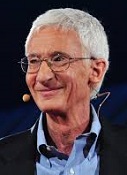
On May 27, 2006 Am. Johns Hopkins U. neuroscientist Roland Redmond Griffiths (1946-) et al. pub. the landmark study Psilocybin Can Occasion Mystical-Type Experiences Having Substantial and Sustained Personal Meaning and Spiritual Significance in Psychopharmacology, reviving interest in clinical research with psychedelic drugs as a potential treatment for addiction, anxiety, and depression.
On Oct. 17, 2006 the antidiabetic drug Sitagliptin by Merck & Co. (brand name Januvia) is approved by the U.S. FDA; on Apr. 2, 2007 they approve an oral combo with metformin, and on Oct. 7, 2011 an oral combo with simvastatin.
In May 2007 the U.S. FDA approves the birth control pill Lybrel, which completely ends monthly periods except for occasional bleeding.
In 2008 researchers at the U. of Southern Denmark discover that the schizophrenia drug thioridazine kills antibiotic-resistant bacteria incl. Staphylococcus aureus; in 2013 it is found that it works by weakening the cell wall.
In 2009 Human Genome Sciences of Rockville, Md. successfully tests the Lupus drug Benlysta.
On Jan. 21, 2011 the USDA approves the drug Viibyrd, an anti-depressant that causes minimal interference with sexual desire.
On June 4, 2015 the U.S. FDA approves the "female Viagra" drug Flibanserin, which increases female sexual desire.
On July 13, 2015 after Otsuka's patent on aripiprazole (Abilify) expires on Oct. 20, 2014 the U.S. FDA approves the atypical antipsychotic drug Brexpiprazole (brand name Rexulti), developed by Otsuka and Lundbeck for the treatment of schizophrenia and depression.
On Feb. 15, 2016 Britta Haenisch et al. of the German Center for Neurodegenerative Diseases in Bonn pub. an article in JAMA Neurology announcing that people age 75+ who regularly take proton pump inhibitors (Prilosec, Nexium, Prevacid) have a 44% increased risk of dementia.
On Apr. 19, 2018 a U.S. FDA advisory panel unanimously recommends the approval of an epilepsy medication caled Epidiolex by GW Pharmaceutics of Britain made with an ingredient found in marijuana, becoming the first cannabis-derived prescription medicine in the U.S.